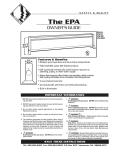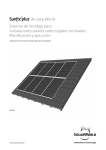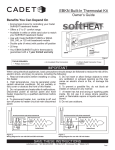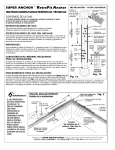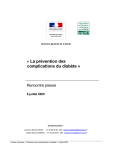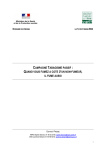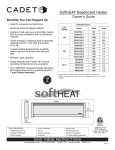Download The EBHA - Menards
Transcript
The EBHA OWNER’S GUIDE Models: EBHA500 EBHA750 EBHA1000 EBHA1380 EBHA1500 EBHA500-8 EBHA750-8 EBHA1000-8 EBHA1380-8 EBHA1500-8 91/2" 24,13 Features & Benefits 31/4" 8,26 • Whisper quiet operation and low surface temperatures 1/ 4" • Filled with 80% water 20%38,26 Ethylene Glycol • Self-contained hermetically sealed element design requires no plumbing, piping, or other water supply • Higher fluid capacity offers better heat retention, which creates less cycling and keeps more consistent room temperatures • Designed to reduce the effects of indoor allergens Tools Required: Phillips Screwdriver Straight Screwdriver Wire Strippers Drill or Hammer Level Punch or Chisel Drill Bits Utility Knife 4 Wood Screws 3 Wire Nuts 1 Strain Relief Connector • 5-year element warranty IMPORTANT INFORMATION WARNING! When working with electricity, turn the electrical power off at the electrical panel board and lock or tag the circuit breaker door. Failure to do so could result in serious electrical shock, burns, or possible death. 1. Read all information labels. Verify that the electrical supply wires are the same voltage as the heater. 6. WARNING Overheating or fire may occur. DO NOT place the heater behind doors. 7. WARNING Fire or explosion may occur. DO NOT place heater in any area where combustible vapors, gases, liquids, or excessive lint or dust are present. 8. WARNING Risk of Electrical Shock. Turn off all power at the electrical panel board supplying power to the heater before doing any electrical wiring. 9. WARNING Risk of Fire. Heater must be kept clear of all obstructions: maintain a 12" minimum clearance in front and above the heater with a 6" minimum on each side. Heaters must be kept clean of lint, dirt and debris. (See Maintenance Instructions) 2. All electrical work and materials must comply with the National Electric Code (NEC), the Occupational Safety and Health Act (OSHA), and all state and local codes. 3. The heater must be grounded to the grounding pigtail (copper wire) provided. 4. If you need to install a new circuit or need additional wiring information, consult a qualified electrician. 5. Protect electrical supply from kinks, sharp objects, oil, grease, hot surfaces or chemicals. WARNING! Element filled with heat transfer fluid con10. taining 20% Ethylene Glycol and 80% water. In the unlikely event of leakage, if consumed, call your local poison control center or seek medical attention immediately. SAVE THESE INSTRUCTIONS TEL: 360-693-2505 Fax: 360-694-8668 P.O. Box 1675 Vancouver, WA 98668-1675 READ ALL INSTRUCTIONS AND SAFETY INFORMATION. Installation Instructions PLACEMENT: For best results, install the Softheat baseboard heater under a window, along an outside wall, or as close as possible to an outside door. WARNING! Risk of Fire. Heater must be kept clear of all obstructions: 12 inches in front and above; 6 inches on both sides minimum. STEP 1 AREA OF INSTALLATION STEP 3 WIRING PROVISIONS / WIRING The seam at the junction of the wall and floor behind the heater should be caulked to prevent dust from being drawn into the room. The heater should be set flush against surface of the wall. When installing a baseboard heater, remove any obstructions between the back of the unit and the surface of the wall. Keep at least 12" minimum from objects hanging above (i.e., drapes). This heating unit is designed for permanent installation. All wiring should be routed in compliance with the National Electrical Code and all local codes, where applicable. A maximum of No. 10 AWG wire may be used with this heater. All wiring should be planned and run before heating units are set in place. Wiring is done on left side only. STEP 2 MOUNTING HEATER TO BRACKETS ll Wa Two mounting brackets are furnished with each EBHA 500, 750, and 1000 watt heater; and three for each EBHA 1380 or 1500 watt heater. These brackets are to be positioned at wall studs 18" (45.7 cm) or less from each end on all models except the EHBA 500, which should have brackets located also at wall studs as near each end of the heater as possible. ut ck O Knoations Loc IN. IN. 1 1 / 82 mm) 3 ( (95 Figure 4. Wall Studs Baseboard Heater Floor Picture not to scale Figure 1. Front view showing location of wall studs, EBHA unit and brackets IMPORTANT! It is extremely important that you verify the electrical supply wires are the same voltage as the heater (i.e. 120 volt heater to 120 volt power supply and 240 volt heater to 240 volt power supply). If replacing an existing heater, check the labels of the old heater and replace using the same voltage. Hooking a 240 volt heater to a 120 volt power supply will drastically reduce the heater's output. Hooking a 120 volt heater to a 240 volt power supply will destroy the heater. 3 3 / 4) mm .24 IN. 1 2 / 4m) m (57 (51 2 IN mm . ) WARNING! RISK OF ELECTRICAL SHOCK. TURN OFF ALL POWER AT THE ELECTRICAL PANEL BOARD SUPPLYING POWER TO THE HEATER BEFORE DOING ANY ELECTRICAL WIRING. THERMOSTAT: A thermostat is required. A Cadet wall thermostat or an EBKA 1-24 end cap DPST thermostat kit is recommended. Place brackets at studs nearest location desired, with bottom edges on floor against wall (See Figure 1). Raise bracket 3/4" (19 mm) above floor for wall-to-wall carpets to provide free circulation of air from floor into heater. Fasten bracket to stud with screws through elongated hole. Place spirit level across top of brackets and level by loosening elongated hole screw and tightening when all brackets are absolutely level (See Figure 2). Finish fastening brackets firmly to wall studs. When wiring unit through rear entrance port, knock out rear port and place heater on wall brackets. Mark knockout location on wall. When running conduit or cable to unit through flooring and entrance port in bottom of junction box, measure 1-1/2" (38mm) from wall and 2" (51mm) from left end of unit. Cut a 7/8" (22mm) hole in floor centered on the measured location (See Figure 4). . ELEMENT SUPPLY WIRES Limit switch T Ground Screw Level Figure 5. Wiring Diagram Straight Edge Brackets Floor Figure 2. Checking with level on top of brackets Place heater so flange on back near top slips down on brackets. Slip lower edge of heater into base of brackets (See Figure 3). Check heater again with spirit level to be sure it is level (See Figure 2). If not, it may be necessary to remove and reset brackets. Once heater is level, use a blunt punch or chisel to Bottom bend bracket base edge over Flange lower lip of heater to hold heater firmly in position. Figure 3. Bracket Unit Back Flange Installation Instructions Refer to wiring diagram (See Figure 5) for proper wiring of heating unit to thermostat. Illustrated in Figures 6, 7, and 8 are wiring diagrams typical of a single unit controlled by a single pole thermostat, a single unit controlled by a double pole thermostat, and two units controlled by a double pole thermostat. Line Line Line Thermal Load Switch On/Off Switch Limit switch Limit switch On/Off Switch Heater Figure 6. Single pole thermostat Thermal Load Switch Limit switch Limit switch Heater Figure 7. Double pole thermostat Heater #1 Heater #2 Figure 8. Double pole thermostat with multiple units STEP 4 THERMOSTAT For best results, use a Cadet wall thermostat or an EBKA 1-24 end cap DPST thermostat kit. It is recommended that a thermostat be provided for each room. In extremely large rooms, a Cadet low-voltage thermostat with double relays will give the most comfortable results. The location of the thermostat should be selected carefully. Thermostats should not be located near drafts from an open doorway or within 18" (45.7cm) of an outside wall, or in direct sunlight or unusual heat sources. A television set or appliance that builds up heat near a thermostat will prevent the thermostat from functioning properly. A wiring diagram illustrating typical wiring of the thermostat is included in literature provided with the thermostat, and on a simple diagram provided on the thermostat. Operation & Maintenance How To Operate Your Heater WARNING! Element filled with heat transfer fluid containing 20% Ethylene Glycol. In the unlikely event of leakage, if consumed, call your local poison control center or seek medical attention immediately. Maintenance 1. Switch the power on at the electrical panel Softheat hydronic baseboards are virtually mainboard. PLEASE NOTE: Upon initial start-up, the tenance-free. However, a certain amount of lint heater may emit a burning odor. This is not danand dust will accumulate inside the unit and gerous and is due to a protective lubricant used should be periodically cleaned. during the manufacturing process. 1. Turn the electrical power off at the electrical 2. Turn the thermostat fully clockwise. panel board (circuit breaker or fuse box). Lock or 3. When the room reaches your comfort level, turn tag the panel board door to prevent someone the thermostat knob counterclockwise until a from accidentally turning the power on while you clicking sound is heard (if using a digital thermoare working on the heater. Failure to do so could stat, set at desired room temperature). The result in serious electrical shock, burns, or possibaseboard will automatically cycle around this ble death. preset temperature. 2. Remove front panel. 3. Vacuum inside the unit, being careful not to damage the aluminum fins on the heater tube. How Softheat Hydronic Baseboards Work Inside a Softheat baseboard a hermetically sealed water and anti-freeze solution is heated by an electric heating element. As the solution is heated, warmth is generated and transmitted through dozens of aluminum fins along the heater tube (it could initially take 30 to 60 minutes to warm a room, depending on the room size). As the warmth spreads outward from the heater, cooler air from the floor and wall naturally flow toward the base of the heater. "Convection air heating" (See Figure 9), means no noisy fans are needed and the room is warmed with even, comfortable heat. There will be no cold and hot spots in the room as found with other types of heaters. Softheat won't blow or burn dust particles, making it allergist recommended for patients with respiratory ailments or allergies. Cold Air Warm Air Room Air Figure 9. WARNING! Risk of Electrical Shock. Connect grounding lead to grounding wire provided. Keep all foreign objects out of heater. WARNING! Risk of Fire. Heaters must be kept clean of lint, dirt and debris. Failure to follow warnings may cause heater to eject sparks, ignite materials, or cause electrical shock. WARNING! Risk of Electrical Shock. When working with electricity, turn the electrical power off at the electrical panel board and lock or tag the circuit breaker door. Failure to do so could result in serious electrical shock, burns, or possible death! Troubleshooting Chart CONSULT LOCAL ELECTRICAL CODES TO DETERMINE WHAT WORK MUST BE PERFORMED BY QUALIFIED ELECTRICAL SERVICE PERSONNEL Symptom Gurgling noise Problem Solution 1. Unit may not be level 1. Check to be sure unit is level. If gurgling doesn't stop within 30 minutes, unit needs to be replaced. 2. Replace element or heater. 2. Unit may have developed a leak Heater not working 1. Heater does not have proper voltage to function correctly 2. Unit wired incorrectly 1. Circuit breaker could be positioned incorrectly. Relocate breaker. Check voltage at the heater between supply wires and make sure it matches required heater voltage. 2. Be sure wires are connected properly and securely with appropriate wire nuts; by verifying with Owner's Guide. If the unit is still not operating, further testing should be done with ohmmeter. Consult an electrician. Liquid found in or around unit 1. Heat transfer fluid may be escaping from element 1. Immediately discontinue use.* 2. Unit needs to be replaced. Room does not heat quickly 1. Unit is slow to heat 2. Unit wired incorrectly 1. No solution necessary - typical initial warm-up takes 30-60 minutes. 2. Check voltage at the heater between supply wires and make sure it matches required heater voltage. Heater will not shut off 1. Heat loss from room is greater than heater capacity 2. Defective thermostat 3. Thermostat wired incorrectly to heater 1. Close doors and windows. Provide additional insulation, install a higher-wattage heater or multiple heaters if necessary. 2. Adjust thermostat to its lowest setting. If heater continues to run (allow two minutes for the thermostat to respond), replace thermostat.. 3. Refer to thermostat documentation and correct wiring. * What to do if the solution in your Softheat Baseboard should leak out: The solution in your Softheat Baseboard is 80% water and 20% Ethylene Glycol (Material Safety Data Sheet available upon request). While this solution is moderately toxic if ingested, there is no immediate health concern with air quality following a spill. Take adequate precautions to keep people and animals away from leakage. Non-porous rubber gloves and eye protection should be worn during the clean-up. Soak up spill with an absorbent material such as paper towels. Once excess liquid or residue has been absorbed, a non-oxidizing cleanser such as an orange citrus cleaner can be used to remove any remaining dried residue (first test a hidden section of flooring for colorfastness). Scrub spill area, then use absorbent material to remove any remaining cleanser. Several applications of the cleanser may be required, depending on size and amount of spill. Warranty LIMITED ONE-YEAR WARRANTY: Cadet Manufacturing Co. will repair or replace any Cadet product, including thermostats, found to be defective or malfunctioning from first date of purchase through the first year. CADET SHALL NOT BE LIABLE FOR DAMAGES SUCH AS PROPERTY DAMAGE AND/OR INCIDENTAL EXPENSES RESULTING FROM BREACH OF THESE WRITTEN WARRANTIES OR ANY IMPLIED WARRANTY. LIMITED FIVE-YEAR WARRANTY: Cadet Manufacturing Co. will repair or replace any Cadet/Softheat baseboard (E) element found to be defective or malfunctioning from first date of purchase through the fifth year. These warranties give you specific legal rights, and you may also have other rights which vary from state to state. Cadet neither assumes, nor authorizes anyone to assume for it, any other obligation or liability in connection with these electric heaters or any part of such heaters. These warranties do not apply: 1. To conditions resulting from improper installation or incorrect supply voltage; 2. To conditions resulting from improper maintenance, misuse, abuse, accident, or alteration; 3. To service calls, or any warranty labor not performed at the Cadet Manufacturing facility; 4. If the date of manufacture cannot be determined; 5. To freight damaged products. If the product should become defective during the warranty period, contact Cadet Manufacturing Co. at 360-693-2505 for instructions on how to have the repair or replacement processed. Products returned without authorization will be refused. Parts and Service Contact Cadet for information on Parts or Service. EL EBHA GUÍA PARA EL PROPIETARIO Modelos: EBHA500 EBHA750 EBHA1000 EBHA1380 EBHA1500 EBHA500-8 EBHA750-8 EBHA1000-8 EBHA1380-8 EBHA1500-8 91/2" 24,13 Características y Beneficios 31/4" 8,26 • Funcionamiento silencioso y temperaturas de superficie bajas • Rellenado con 80% de agua, 20% de glicol etilénico 31/4" 8,26 • Sistema autónomo herméticamente sellado que no requiere plomería, tubería u otro suministro de agua. • Capacidad superior de líquido que ofrece mejor retención del calor, lo que crea menos fun cionamiento cíclico y mantiene más constantes las temperaturas del ambiente. • Diseñado para reducir los efectos de los alergenos del interior • Garantía de 5 años para el elemento. Herramientas Requeridas: Destornillador Phillips Destornillador recto Desforrador de cable Barrena o martillo Brocas para barrenar Cuchillo multi-uso 4 tornillos de madera 3 tuercas de alambre 1 conector de alivio de esfuerzo INFORMACIÓN IMPORTANTE ¡ADVERTENCIA! Cuando esté trabajando con electricidad, desconecte la corriente eléctrica en el tablero del panel eléctrico y trabe o coloque un cartel en la puerta del interruptor de circuitos. No hacerlo podría resultar en la electrocución, quemaduras graves o hasta la posibilidad de muerte. 1. Lea todas las etiquetas que contengan información. Verifique que todos los cables de suministro eléctrico sean del mismo voltaje que el calentador. 2. Todo trabajo eléctrico así como los materiales deben cumplir con el Código Eléctrico Nacional (“NEC”, por sus siglas en inglés), con la Ley de Seguridad y Salud Ocupacional (“OSHA”, por sus siglas en inglés) y con todos los códigos estatales y locales. 3. El calentador debe estar conectado con el cable espiralado de conexión a tierra (el cable de cobre) provisto. 4. Si usted necesita instalar un circuito nuevo o si necesita información adicional acerca del cableado, consulte con un electricista calificado. 5. Proteja el suministro eléctrico de enredos, objetos afilados, aceite, grasa, superficies calientes o substancias químicas. 6. ADVERTENCIA Puede ocurrir un recalentamiento o incendio. NO colocar el calentador detrás de puertas. 7. ADVERTENCIA Pueden ocurrir explosiones o incendios. NO colocar el calentador en ningún área donde exista la presencia de vapores, gases, líquidos combustibles o exceso de pelusa o polvillo. 8. ADVERTENCIA Riesgo de electrocución. Desconectar la energía eléctrica en el tablero de panel que suministra la corriente al calentador antes de llevar a cabo el cableado para la electricidad 9. ADVERTENCIA Riesgo de Incendio. El calentador debe mantenerse libre de toda obstrucción, mantener un espacio mínimo de 12 pulgadas desde la parte de adelante y por encima del calentador y un mínimo de 6 pulgadas de cada costado. Los calentadores deben mantenerse libres de pelusa, suciedad y residuos (Ver las Instrucciones para el Mantenimiento). 10. ¡ADVERTENCIA! Elemento rellenado con líquido de transferencia de calor que contiene un 20% de glicol etilénico y 80% de agua. En el improbable caso de que existieran fugas, de ingerirse, deberá llamar al centro de control de envenenamientos o solicitar atención médica de inmediato. CONSERVE ESTAS INSTRUCCIONES TEL: 360-693-2505 Fax: 360-694-8668 P.O. Box 1675 Vancouver, WA 98668-1675 LEA TODAS LAS INSTRUCCIONES E INFORMACIÓN ACERCA DE LA SEGURIDAD. Instrucciones para la Instalación UBICACIÓN: Para obtener mejores resultados, instalar el calentador de plinto radiante Softheat debajo de una ventana junto a una pared exterior o tan cerca como resulte posible de una puerta que da al exterior. TERMOSTATO: Se requiere un termostato. Se recomienda un termostato de pared Cadet o un juego de termostato ¡ADVERTENCIA! Riesgo de incendio. El calentador debe mantenerse libre de toda obstrucción: a 12 pulgadas en la parte de adelante y por arriba; a 6 pulgadas como mínimo de cada costado. DPST con casquete EBKA 1-24. Paso 1 AREA DE INSTALACIÓN La junta en la unión de la pared y el piso detrás de los calentadores deberá calafatearse para evitar que se atraiga el polvillo hacia la habitación. Los calentadores deberán colocarse al ras contra la superficie de la pared. Al instalar calentadores de plinto radiante, quitar toda obstrucción entre la parte posterior de la unidad y la superficie de la pared. Mantener a por lo menos 12” como mínimo de objetos que cuelguen desde arriba (por ejemplo cortinados). Paso 2 MONTAJE DEL CALENTADOR A LAS ABRAZADERAS Se proporcionan dos abrazaderas con cada calentador EBHA de 500, 750 o 1000 vatios y tres con cada calentador EBHA de 1380 y 1500 vatios. Estas abrazaderas deben ubicarse en soportes de la pared a 18 pulgadas (45.7 cm) o menos de cada extremo en todos los modelos, con excepción del EBHA 500 que debe tener las abrazaderas ubicadas también en los soportes de la pared tan cerca de cada extremo del calentador como resulte posible. Soportes Wall de la pared Studs Calentador de plinto radiante Baseboard Heater ¡IMPORTANTE! Es de extrema importancia que usted verifique los cables de suministro eléctrico para asegurarse de que sean del mismo voltaje que los del calentador (es decir, un calentador de 120 voltios con un suministro de energía de 120 voltios y un calentador de 240 voltios con un suministro de energía de 240 voltios). Cuando esté reemplazando un calentador existente, verifique las etiquetas del calentador viejo y reemplácelo utilizando el mismo voltaje. Si conecta un calentador de 240 voltios con un suministro de 120 voltios reducirá drásticamente el rendimiento del calentador. Si conecta un calentador de 120 voltios con un suministro de energía de 240 voltios destruirá el calentador. Floor Piso Dibujo no a escala Figura 1. Vista de adelante que indica la ubicación de los soportes de la pared, de la unidad EBHA y de las abrazaderas. Colocar las abrazaderas en los soportes más cercanos al lugar deseado, con los bordes inferiores sobre el piso y contra la pared (Ver la Figura 1). Elevar la abrazadera 3/4 pulgada (19 mm) por encima del piso cuando haya alfombrados de pared a pared para poder proporcionar la circulación libre del aire desde el piso hacia el calentador. Ajustar la abrazadera al soporte con los tornillos a través del orificio alargado. Colocar el nivel de burbuja de aire a través de la parte superior de las abrazaderas y nivelar aflojando el tornillo de orificio alargado y ajustando cuando todas las abrazaderas estén absolutamente niveladas (Ver la Figura 2). Terminar de ajustar las abrazaderas con firmeza en los soportes de la Nivel Level Borde recto Straight Edge esté a nivel (Ver la Figura 2). De no estarlo, es posible que sea necesario quitar y volver a ubicar las abrazaderas. Una vez que estén a nivel, utilice un agujereador o cincel para doblar el borde de la base de la abrazadera por encima del labio inferior del calentador y sostener el calentador firmemente en posición. Unit Back Flange Bottom Flange Figura 3. Abrazadera Paso 3 DISOSICIONES PARA EL CABLEADO / CABLEADO Esta unidad de calefacción ha sido diseñada para ser instalada de forma permanente. Todo cableado deberá realizarse en cumplimiento con los Códigos Eléctricos Nacionales y con todos los códigos locales donde resulten pertinentes. Se puede utilizar un cable Nº 10 AWG como máximo con este calentador. Hay un diagrama completo de cableado ubicado en la parte interior de la tapa de la caja de circuito. Todo cableado deberá planearse y realizarse antes de colocar las unidades de calefacción en su lugar. El cableado se realiza solamente del lado izquierdo. Pared ll Wa 3 3 / 4) m 4 2 m . (95 IN. 1 2 / 4m) m (57 as de l bles s e nta iton ckaOcu smo UKnboiactziaonssde ocie Lp IN. IN. 1 1 / 82 mm) (3 (51 2 IN mm . ) ¡ADVERTENCIA! RIESGO DE ELECTROCUCIÓN. DESCONECTAR LA ENERGÍA ELÉCTRICA EN EL TABLERO DE PANEL QUE SUMINISTRA LA CORRIENTE AL CALENTADOR ANTES DE LLEVAR A CABO EL CABLEADO PARA LA ELECTRICIDAD. Figura 4. Al cablear la unidad a través de la entrada trasera, desmonte la entrada trasera y coloque el calentador sobre las abrazaderas de pared. Marque la ubicación de la pieza desmontable en la pared. Al colocar los conductos o cables que van a la unidad a través del piso y de la entrada de la parte inferior de la caja de conexión, mida 1 1/2” (38 mm) desde la pared y 2 pulgadas (51 mm) desde el extremo izquierdo de la unidad. Corte un orificio centrado de 7/8” (22 mm) en el piso sobre el lugar donde tomó la medida (Ver la Figura 4). Brackets Abrazaderas Floor Piso Figura 2. Verificar con el nivel colocado en la parte superior de las abrazaderas. Colocar el calentador de modo tal que la aleta de la parte posterior cerca de la parte superior calce en las abrazaderas. Haga calzar el borde inferior del calentador en la base de las abrazaderas (Ver la Figura 3). Verifique el calentador nuevamente con el nivel de burbuja para asegurarse de que Refiérase al diagrama de cableado (Ver la Figura 5) para determinar la forma apropiada de realizar el cableado de la unidad de calefacción que va al termostato. Ilustrado en las Figuras 6, 7 y 8 se encuentran los diagramas de cableado típicos de una unidad simple controlada por un termostato de un solo polo, una unidad simple controlada por un termostato de doble polo y dos unidades controladas por un termostato de doble polo. Instrucciones para la Instalación ELEMENT Line Línea Line Línea Thermal Interruptor Load de carga Switch Field Wiring SUPPLY WIRES térmica Rojo T Tornillo Ground a tierra Screw Limit switch Calentador Heater On/Off Figura 6. Termostato de un solo polo Line Línea Figura 5. Diagrama de Cableado Interruptor On/Off Encender/ Switch Apagar Limit switch Paso 4 TERMOSTATO Calentador 1 Heater #1 Interruptor Switch Limit switch Calentador Encender/Apagar Heater Figura 7. Heater Termostato Element de doble polo Interruptor Thermal deLoad carga Switch térmica Limit switch Calentador 2 Heater #2 Red Figura 8. Termostato der Tu doble Red be Heate polo con unidades múltiples. Limit Para obtener mejores resultados, utilice un termostato de pared Cadet o un juego de termostato DPST con capacete EBKA 1-24. Se recomienda que se proporcione un termostato para cada habitación. En las habitaciones extremadamente grandes, se obtienen mejores resultados con un termostato Cadet de bajo voltaje con dos relés. La ubicación del termostato deberá seleccionarse con mucho cuidado. Los termostatos no deberán estar ubicados cerca de corrientes de aire provenientes de una puerta abierta o dentro de un espacio de 18 pulgadas (45.7 cm) de una pared exterior o en contacto directo con la luz del sol o con fuentes de calor inusuales. Un aparato de televisión o electrodoméstico que acumule calor cerca de un termostato evitará que el termostato funcione apropiadamente. La documentación que viene con el termostato incluye un diagrama de cableado que ilustra el cableado típico del termostato; y dicho aparato incluye también un diagrama sencillo. ¡ADVERTENCIA! Elemento rellenado con líquido de transferencia de calor que contiene 20% de glicol etilénico. En el improbable caso de que existiera una fuga, si se ingiriera, llame al centro de control de envenenamientos local o solicite atención médica de inmediato. ¡ADVERTENCIA! Riesgo de electrocución. Conectar el conector a tierra con el cable a tierra provisto. Mantener todos los objetos extraños alejados del calentador. Funcionamiento y Mantenimiento Cómo Hacer Funcionar su Calentador Mantenimiento 1. Conectar la energía en el tablero del panel eléctrico. Los plintos radiantes hidrónicos Softheat virtualmente no necesitan mantenimiento. Sin embargo, POR FAVOR ADVIERTA: Al encender inicialmente, una cierta cantidad de pelusa y polvillo se acumuel calentador emitirá un olor a quemado. Esto no es larán en el interior de la unidad y deberá limpiarse peligroso y es debido al lubricante protector utiperiódicamente. lizado durante el proceso de fabricación. 2. Haga girar el termostato completamente en el 1. Desconecte la energía eléctrica en el tablero del panel eléctrico (interruptor de circuito o caja de mismo sentido que giran las manecillas del reloj. fusibles). Trabe o coloque un cartel en la puerta del 3. Cuando la habitación alcance el nivel de comoditablero del panel para evitar que alguien conecte la dad que usted desea, haga girar la perilla del terenergía accidentalmente mientras usted está tramostato en sentido contrario al que giran las bajando en el calentador. No hacerlo podría resulmanecillas del reloj hasta escuchar un chasquido tar en la electrocución, quemaduras graves o (si está utilizando un termostato digital, graduar a hasta en la muerte. la temperatura ambiente deseada). El tablero hará 2. Quitar el panel de adelante. un ciclo automático en torno a esta temperatura 3. Aspire el interior de la unidad, con cuidado de no preestablecida. dañar la aletas de aluminio en el tubo del calentador. ¡ADVERTENCIA! Riesgo de incendio. Los calentadores deben mantenerse libres de pelusa, polvillo y residuos. No respetar las advertencias podría hacer que el calentador despidiera chispas, encendiera materiales o causara la electrocución. Como funcionan los plintos radiantes hidrónicos Softheat Dentro de un plinto radiante Softheat una solución herméticamente sellada de agua y anticongelante se calienta a través de un elemento de calefacción eléctrico. A medida que la solución se calienta, se genera un calor que se transmite a través de docenas de aletas de aluminio a lo largo del tubo del calentador (inicialmente podría tardar de 30 a 60 minutos para calentar una habitación de acuerdo al tamaño de la misma). A medida que el calor se distribuye hacia afuera desde el calentador, aire más frío del piso y de la pared fluyen naturalmente hacia la base del calentador. “Calefacción con aire de convección” (Ver la Figura 9) significa la ausencia de ventiladores ruidosos ya que estos no resultan necesarios y la habitación se calienta con calor parejo y cómodo. No habrá lugares fríos y calientes en la habitación como es el caso con otros tipos de calentadores. Softheat no soplará ni quemará partículas, convirtiéndolo en un aparato recomendado para pacientes con trastornos respiratorios o alergias por parte de los médicos especialistas en alergia. Co ld Air Aire Frío Air Aire Caliente Warm AireRoom de la habitación Air Figura 9. ¡ADVERTENCIA! Riesgo de electrocución. Cuando trabaje con electricidad, apague la energía eléctrica en el tablero del panel eléctrico y trabe o coloque un cartel en la puerta del interruptor de circuitos. ¡No hacerlo podría resultar en electrocución, quemaduras graves o hasta en la posibilidad de muerte! GUÍA DE RESOLUCIÓN DE PROBLEMAS CONSULTAR CON LOS CÓDIGOS DE ELECTRICIDAD LOCALES PARA DETERMINAR QUE PARTE DEL TRABAJO DEBE SER REALIZADA POR PERSONAL DE SERVICIO ELÉCTRICO CALIFICADO. Síntoma Problema Solución Ruido como gorgoteo 1. La unidad puede no estar nivelada 2. Es posible que se haya producido una fuga en la unidad. 1. Verificar para asegurarse de que la unidad esté nivelada. Si el gorgoteo no se detiene en un plazo de 30 minutos, se deberá reemplazar la unidad. 2. Reemplace el elemento o el calentador. El calentador no funciona 1. El calentador no tiene el voltaje apropiado para funcionar correctamente. 2. Unidad cableada incorrectamente. 1. El cortacircuito podría estar mal dispuesto. Colóquelo en otro lugar. Revise el voltaje en el calentador entre los alambres de suministro y cerciórese de que coincida con el voltaje que requiere el calentador. 2. Cerciórese de que los alambres estén conectados correcta y firmemente con las tuercas correspondientes; consulte para ello la Guía para el propietario. Si la unidad aún no funciona, se deben realizar más pruebas con un ohmímetro. Consulte a un electricista. Líquido encontrado en el inter or o alrededor de la unidad. 1. El líquido de transferencia de calor 1. Deje de utilizar inmediatamente.* puede estar escapándose del elemento. 2. Se debe reemplazar la unidad. 1. No necesita solución – el entibiamiento inicial típico tarda de 30 a 60 1. La unidad tarda en calentarse. minutos. 2. Revise el voltaje en el calentador entre los alambres de suministro y verifique que coincida con el voltaje que requiere el calentador. La habitación no se calienta rápidamente El calentador no se apaga 1. La pérdida de calor en la habitación es superior a la capacidad del calentador. 2. Termostato defectuoso. 3. Termostato cableado incorrectamente hacia el calentador. 1. Cerrar las puertas y ventanas. Proporcionar aislamiento adicional, instalar un calentador de vatiaje más elevado o múltiples calentadores si fuera necesario. 2. Ajustar el termostato a la graduación más baja. Si el calentador continúa funcionando (permita el transcurso de dos minutos para que el termostato responda), reemplace el termostato. 3. Refiérase a la documentación del termostato y cableado correcto. *¿Qué hacer si hubiera fugas de solución en su calefactor Softheat Baseboard: La solución del Softheat Baseboard está compuesta en un 80% por agua y en un 20% por glicol de etileno (puede solicitar la Hoja de Datos de Seguridad de Materiales si lo desea). Si bien esta solución es moderadamente tóxica si se ingiere, no debiera haber inquietudes sanitarias inmediatas respecto de la calidad del aire tras un derrame. Adopte las precauciones pertinentes para mantener a las personas y animales lejos de la fuga. Utilice guantes no porosos de caucho y protectores oculares durante la limpieza. Seque el derrame con un material absorbente como toallas de papel. Una vez que ha absorbido el líquido o los residuos, puede usar un limpiador no oxidante como uno cítrico de naranja para eliminar los residuos secos restantes (primero haga una prueba en una zona oculta del piso para verificar que no se destiña). Friegue la zona del derrame y luego use un material absorbente para quitar el limpiador que pudiera quedar. Puede que se deba aplicar el limpiador varias veces, dependiendo del tamaño y la cantidad del derrame. Garantía GARANTIA LIMITADA DE UN AÑO: Cadet Manufacturing Co. reparará o reemplazará cualquier producto Cadet, incluyendo termostatos que se determine es defectuoso o está funcionando mal desde la fecha de compra original hasta el primer año. GARANTIA LIMITADA DE CINCO AÑOS: Cadet Manufacturing Co. reparará o reemplazará cualquier elemento (E) de tablero Cadet/Softheat ® que se determine es defectuoso o está funcionando mal desde la fecha de compra original hasta el quinto año. ESTAS GARANTíAS NO SON PERTINENTES: 1) Para condiciones que sean el resultado de la instalación inapropiada o del suministro incorrecto de voltaje; 2) Para condiciones que sean el resultado del mantenimiento inapropiado, mal uso, abuso, accidente o alteración 3) Para las llamadas de servicio o mano de obra que involucren el cambio de pieza(s) defectuosa(s) 4) Si no se puede determinar la fecha de fabricación 5) Para los productos dañados durante el flete. CADET NO SERÁ RESPONSABLE DE LOS DAÑOS A LA PROPIEDAD Y/O GASTOS INCIDENTALES QUE RESULTEN DEL INCUMPLIMIENTO DE ESTAS GARANTÍAS ESCRITAS O DE CUALQUIER GARANTIA IMPLICITA. Estas garantías le otorgan derechos legales específicos y es posible que usted cuente con otros derechos que varían de acuerdo a cada estado. Cadet no asume ni autoriza a nadie para que asuma de su parte ninguna otra obligación o responsabilidad contra terceros relacionada con estos calentadores eléctricos o con cualquier parte de dichos calentadores. Si el producto llegara a ser defectuoso durante el período de garantía, comunicarse con Cadet Manufacturing llamando al 360-693-2505 para obtener instrucciones acerca de como procesar la reparación o reemplazo. Los productos que se devuelvan sin autorización serán rechazados. Repuestos y servicio Comuníquese con Cadet para obtener información sobre repuestos o servicio. #706955 REV. C 07/05










